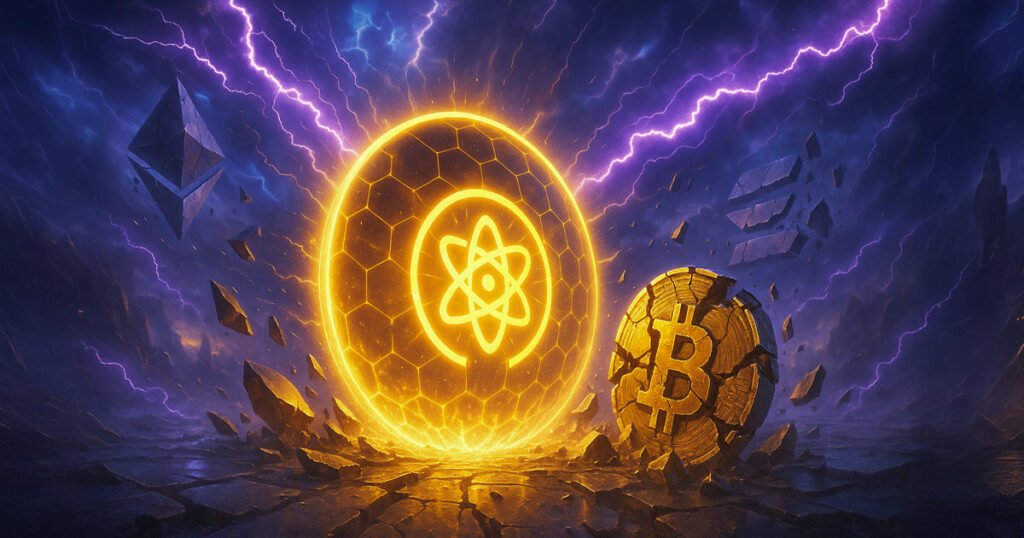The Rise of Quantum Resistance: QRL’s Role in a Post-Quantum Future
As the landscape of digital assets evolves, quantum security concerns are gaining significant traction following BlackRock’s recent warning regarding cryptographic vulnerabilities in Bitcoin and Ethereum. This warning has amplified interest in quantum-resistant infrastructures, creating a paradigm shift in how investors view the digital asset market. Among the front-runners in this domain is the Quantum Resistant Ledger (QRL), a blockchain network specifically designed to withstand the impending threats posed by quantum computing. Over the past month, QRL’s native token has surged by over 33%, reflecting a growing confidence in frameworks that are built to endure in a post-quantum world.
Understanding Quantum Threats to Cryptography
The urgency surrounding quantum security was propelled when BlackRock amended its iShares Bitcoin Trust (IBIT) and Ethereum Trust (ETHA) filings on May 9. The revised risk language highlighted the potential for future quantum computing advancements to cause losses for shareholders. This disclosure coincides with rapid breakthroughs in quantum computing capabilities, with Google’s Willow processor and Microsoft’s Majorana 1 chip leading the charge. These innovations have reduced the time frame for developing scalable quantum computers, placing the world of cryptography squarely in the crosshairs of disruption. Notably, recent advancements have positioned the decryption of widely used algorithms, such as RSA-2048, feasible with fewer than one million error-corrected qubits—much lower than the previously estimated 20 million qubits.
The Emergence of Quantum Resistant Ledger (QRL)
Among the various digital assets reacting to these developments is QRL, established in 2017 with the intention of providing a secure alternative in the face of quantum threats. The micro-cap token currently has a market capitalization of around $38 million and is listed on a few low-volume exchanges. Despite hitting its all-time high of $3 in 2018, its current price of $0.58 showcases the volatility inherent in the digital asset space. However, the recent uptick in its price signifies a newfound attention towards the importance of quantum-resistant solutions. QRL has distinguished itself by integrating post-quantum cryptography from its inception, primarily through hash-based XMSS signatures.
Innovative Protocols and Future-Proofing
In addition to its existing architecture, QRL is also advancing towards a more diversified offering through Project Zond, a next-generation protocol currently in its public testnet phase. This initiative aims to extend quantum resistance protections to Ethereum-style smart contracts and DeFi applications, thereby creating a solid foundation for future layer-2 architectures. The introduction of quantum-safe address schemes serves to solidify QRL’s position in the evolving market. As Iain Wood, QRL’s operations manager, states, “It is now no longer controversial to say that all blockchains that exist by 2035 will have to be post-quantum secure.” This assertion underlines the necessity for proactive rather than reactive measures in the blockchain ecosystem.
QRL’s Strategic Alliances and Industry Position
QRL’s proactive measures are further emphasized by its membership in both the Linux Foundation’s Post-Quantum Cryptography Alliance and the Public Key Infrastructure Consortium. These alliances allow QRL to align with broader industry movements advocating for enhanced security measures within digital infrastructures. As the conversations surrounding quantum threats grow more pronounced, the consensus indicates that existing blockchains will need significant upgrades to remain viable in a post-quantum landscape. However, QRL stands apart as a network that has built its foundations with future-proofing in mind, thus eliminating the substantial risks associated with retrofitting quantum-resistance into existing architectures.
Market Sentiment and Future Outlook
Investor sentiment has notably shifted as quantum computing startups garnered $1.25 billion in funding during Q1 2025 alone—a staggering 128% increase year-over-year. This influx of capital indicates a collective pivot from theoretical quantum research to tangible applications and technologies that can mitigate risks associated with potential quantum decryption. QRL’s recent market performance reflects this evolving sentiment, as investors increasingly seek assets that are structurally immune to cryptographic disruption. The transition in industry dialogue now centers around when, not if, legacy cryptography may become outdated, further validating QRL’s relevance in this rapidly changing landscape.
In summary, as quantum threats loom ever closer, the need for quantum-resistant infrastructures becomes increasingly urgent. QRL stands out as a forward-thinking solution that has embraced the challenges posed by quantum computing head on. Through innovative protocols and industry alliances, QRL not only fortifies itself against emerging threats but also advocates for a secure digital future, ensuring its place in the ever-evolving digital asset ecosystem.


